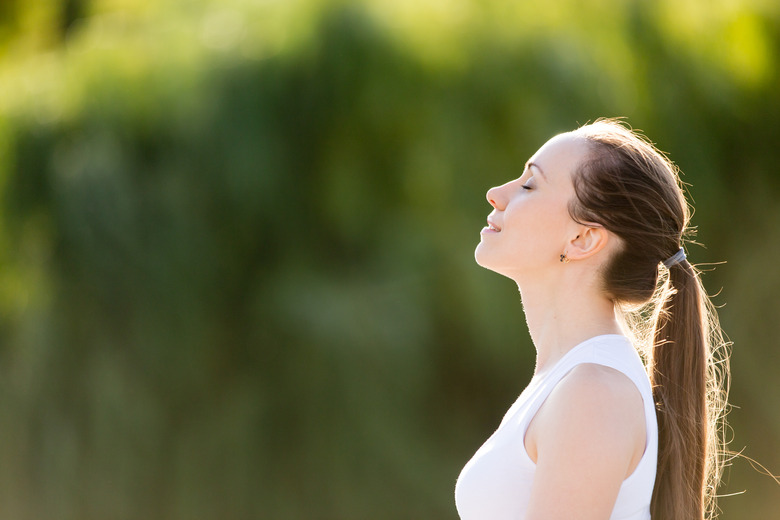Three Ways The Body Uses Energy
The body needs energy for everything it does: breathing, eating, sleeping, walking, working and any other activity that we perform in our everyday lives. This energy is provided by food in the form of calories. The body uses energy to eat, digest and metabolize food, and to burn kilojoules during physical activity, but it also needs a large amount of energy to exist in a state of complete rest.
Eating, Digesting and Metabolizing Food
Eating, Digesting and Metabolizing Food
The process of converting calories from food and drink into energy is a complicated biochemical process called metabolism. A body uses up to 10 percent of its energy to eat, digest and metabolize food. Digestion breaks down food, both chemically and mechanically, into smaller components that can be absorbed into the bloodstream. After digestion, the smaller components are carried across the intestinal wall through absorption. Next comes elimination, when undigested food and waste products are removed from the body. At the same time, anabolism is changing small molecules such as amino acids and fatty acids into more complex, larger forms, such as glycogen and hormones, which are crucial for the growth and maintenance of cells and tissues.
Burning Kilojoules During Physical Activity
Burning Kilojoules During Physical Activity
About 20 percent of an average active person's energy is required to burn kilojoules during physical activity. During exercise, the body relies on three different energy systems, which work independently of one another but may all be used at the same time. The ATP-PCr system is used during brief bursts of exercise, such as sprinting or jumping. A chemical reaction causes the ATP-PCr molecules to separate, which releases the energy required for contraction of the muscles. Other types of short, intense activity may rely on the glycolytic energy system, which is responsible for breaking down glucose stored in the liver and skeletal muscles and converting it to ATP – adenosine triphosphate, the chemical form of raw energy in your body. Finally, the aerobic system uses oxygen to break down fat stores for energy that the body relies on for a lengthy, continuous energy supply, such as it needs during a long run, swim or cycle.
Being at Rest
Being at Rest
Most of the energy the body uses each day – 50 to 80 percent – is needed for being at rest, otherwise known as basal metabolism. This is the minimum amount of energy required to maintain the body's vital functions, such as breathing, blood circulation and organ function. The rate at which energy is used for these vital functions is the basal metabolic rate (BMR). Not everybody has the same BMR; genetics, sex, age, height and weight are all factors. Your BMR drops as you get older because muscle mass decreases. To maintain a good BMR and become more energy efficient, increase your overall calorie burn through exercise.
Cite This Article
MLA
Gillespie, Claire. "Three Ways The Body Uses Energy" sciencing.com, https://www.sciencing.com/three-ways-body-uses-energy-8706999/. 23 April 2018.
APA
Gillespie, Claire. (2018, April 23). Three Ways The Body Uses Energy. sciencing.com. Retrieved from https://www.sciencing.com/three-ways-body-uses-energy-8706999/
Chicago
Gillespie, Claire. Three Ways The Body Uses Energy last modified March 24, 2022. https://www.sciencing.com/three-ways-body-uses-energy-8706999/
